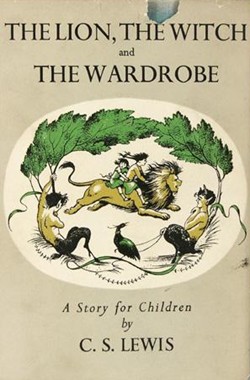Defining heroism is a difficult task, yet identifying hero relatively speaking is easier to do in a comparison. The two best examples of child book heroes and heroism are displayed by author C. S. Lewis' character Edmund in The Lion, The Witch and The Wardrobe, and David Almond's character Michael in Skellig. Both Michael and Edward undertake a series of events that challenge them to new heights. The standard definition of a hero suggests that a hero is the protagonist individual who is selfless, kind and noble. A child hero, in comparison, is a child character that develops slowly into their hero character as they undergo their life changing experience and growing pains. Taking a close look at these two childhood heroes will give us a better understanding of the question " Are heroes born or made ?, with a specialized focus on childhood fictional heroes that influenced and sparked the imagination of hundreds if not millions of children.


In The Lion, The Witch and The Wardrobe, Edmund Pevensie is a ten-year-old schoolboy and the second youngest sibling in the Pevensie family of four children. The story starts in the suburbs of Finchley, a northern district of London, England, during WWII, but the story takes play in the imaginary world of Narnia. Edmund, early on in the novel, falls prey to the evil spell of the White Witch- the false Queen of Narnia, who manipulates him using magical Turkish Delight. Tempting Edmund with the idea of power, the White Witch brings out his greed and selfishness. Unfortunately, Edmund like any other child falls victim to the White Witch's tricks. He temporally betrays his siblings to become Prince of Narnia and sole heir to the throne of Narnia. After betraying his siblings, Edmund has the distinguishing and redeeming quality of courage to admit his wrongs, and to redeem himself in the battle against the White Witch with his courageous strength and noble acts of self-sacrifice.
In the novel Skellig, Michael is a ten-year-old British schoolboy. Unlike Edmund, Michael's adventures are in the real world where he has to take care of a dying angel like creature by the name of Skellig. To make matters worse, Michael is also coping with the fear that his prematurely born sister named Joy-who might be dying due to preemi complications. What differentiates Michael from Edmund is that he has to struggle with the concept of life and death at a very young age of ten years old. In each of his encounters with Skellig and Joy, Michael comes closer to understanding the precious balance of The Life and Death Cycle. What sets Michael apart from childhood figures is his keen empathy for others, especially for people in distress. The significance of Michael's ability to mature and transform into this caring and understanding young adult at the age of ten-years-old is what makes him an extraordinary individual and child hero. When comparing Michael's maturity to Edmunds lack thereof early on in the novel, it becomes apparent that both through their experiences grow wiser and mature as they overcome their respective challenges of courage and maturity.
Don’t believe me check out the follow up post on Defining Moments.